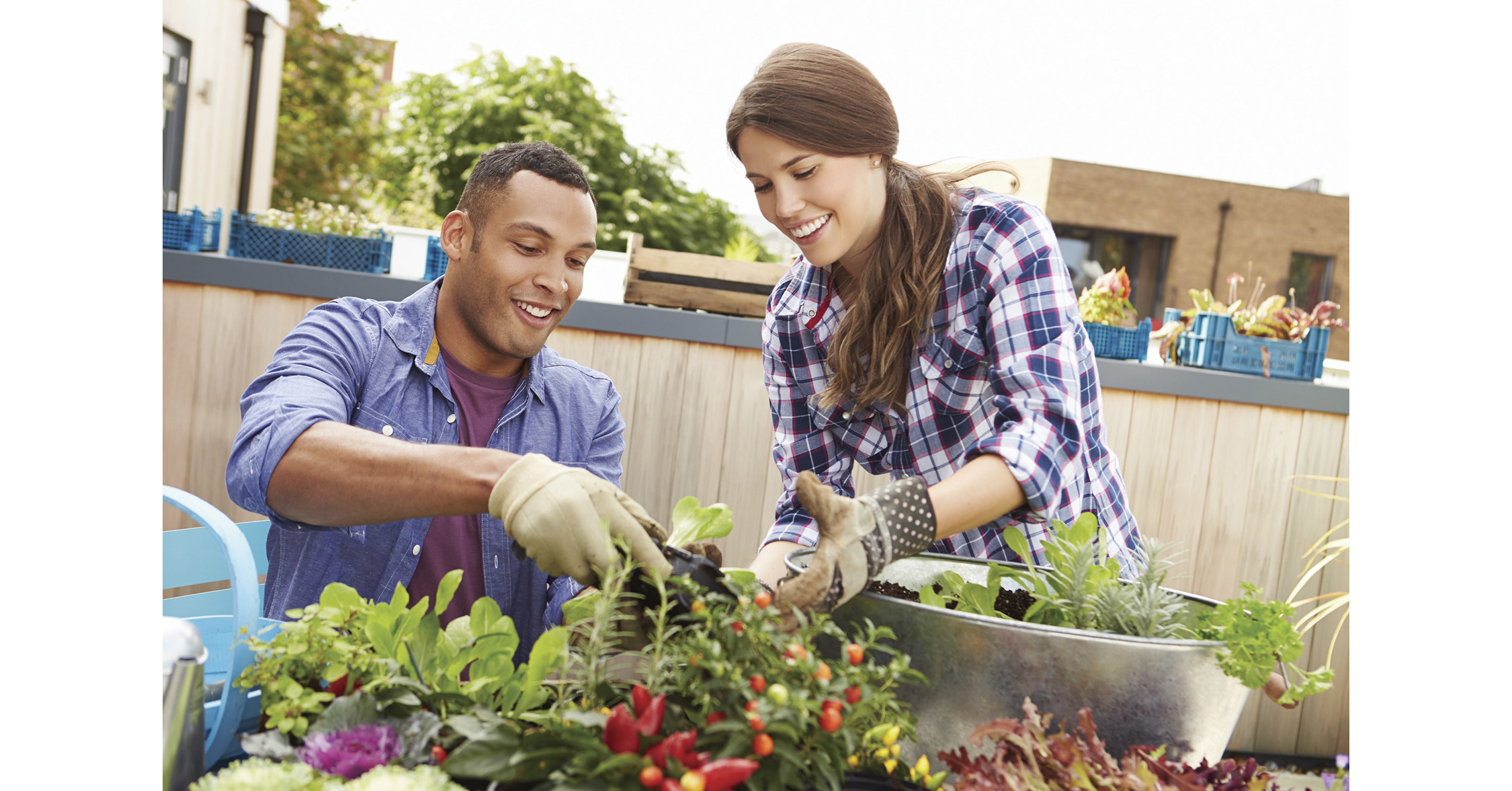Whether you have a small balcony or a tiny backyard, urban gardening is a wonderful way to bring greenery into your urban space. In this article, you will find ten practical and easy-to-follow tips that will help you create a thriving urban garden. From choosing the right plants to maximizing limited space, these tips will empower you to transform your urban oasis into a thriving botanical haven. So get your gardening gloves ready and let’s get started!

This image is property of mma.prnewswire.com.
Choosing the Right Location
Evaluation of Sunlight
When it comes to urban gardening, one of the most crucial factors to consider is sunlight. Before you start planting, it’s important to evaluate the amount and quality of sunlight your chosen location receives. Most plants thrive when they have access to at least six hours of direct sunlight each day, so choose a spot that receives ample sunlight. Take note of any buildings or trees that may cast shadows on your garden space, as these can affect sunlight exposure. Keep in mind that different plants have varying sunlight requirements, so you may need to consider this when selecting the plants for your urban garden.
Assessing Available Space
The available space in your urban garden will greatly impact the types and number of plants you can grow. Take some time to assess the space you have and determine the best way to maximize it. Consider factors such as the dimensions of your garden area, any existing structures or fixtures, and any limitations or restrictions you may have. For smaller spaces, you may need to get creative and utilize vertical gardening or container gardening techniques to make the most of your available area. By assessing and planning your space wisely, you can create an urban garden that is both functional and aesthetically pleasing.
Considering Wind Exposure
In an urban environment, wind exposure can be a significant issue that affects the health and growth of your plants. Strong, gusty winds can damage fragile plants and hinder their growth. When choosing a location for your garden, take into account the wind patterns in your area. If possible, choose a spot that is sheltered from strong winds, such as near a wall or fence. If your chosen space is particularly windy, consider erecting windbreaks or utilizing trellises and other structures to help protect your plants. By considering wind exposure, you can create a more favorable growing environment for your urban garden.
Selecting the Right Plants
Researching Plant Compatibility
Different plants have different needs and thrive in different conditions. Before selecting the plants for your urban garden, it’s essential to research their compatibility with your chosen location and climate. Consider factors such as the temperature range, humidity levels, and soil conditions in your area. Some plants may require specific conditions to grow successfully, so make sure to choose plants that are well-suited to your environment. Additionally, research the compatibility of the plants you plan to grow together. Some plants can complement each other’s growth and repel pests, while others may inhibit each other’s growth. By thoroughly researching plant compatibility, you can ensure a thriving and harmonious garden.
Choosing Compact Varieties
In urban gardening, space is often limited, making it important to choose plants that are compact in size. Look for plant varieties that are known to grow in a bushy or compact manner, rather than those that spread out or vine extensively. Compact varieties not only save space, but they are also generally easier to maintain and harvest. Consider selecting dwarf varieties of vegetables or herbs, which can be grown in containers or small garden beds. When choosing flowers, opt for compact flowering plants that don’t require excessive pruning or take up too much space. By choosing compact varieties, you can maximize your gardening space without sacrificing the beauty and productivity of your urban garden.
Considering Soil Requirements
The soil in your garden plays a vital role in the health and development of your plants. Before planting, it’s crucial to consider the soil requirements of the plants you wish to grow. Some plants prefer well-draining soil, while others thrive in clay or loamy soil. Research the specific soil requirements of each plant and assess the quality of your soil. If your soil is lacking in nutrients or has poor drainage, you may need to amend it with organic matter or use raised beds or containers with high-quality potting soil. Understanding the soil requirements of your chosen plants will help you create a conducive growing environment and support their overall growth and productivity.
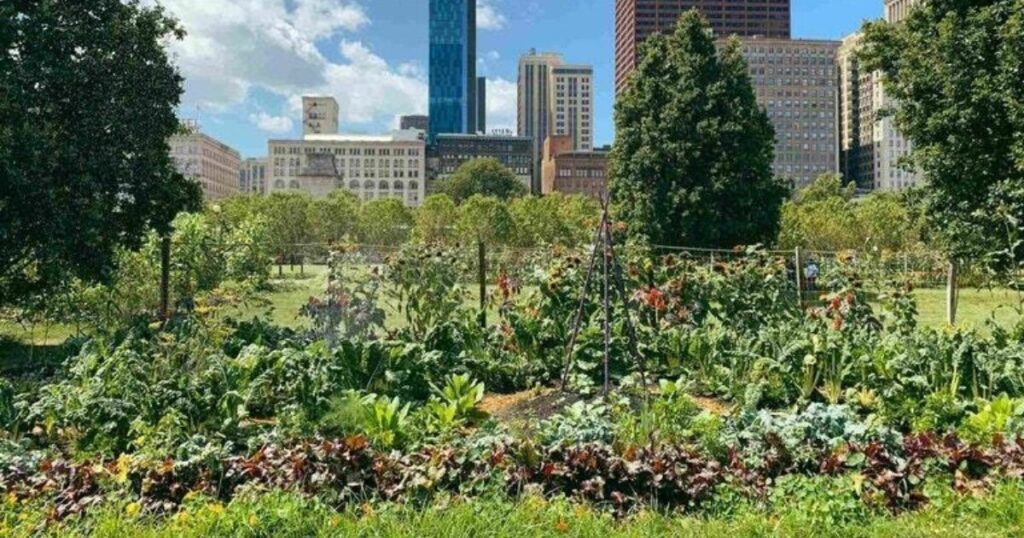
This image is property of cdn2.assets-servd.host.
Managing Soil Quality
Testing Soil pH
Maintaining the right pH level in your soil is essential for healthy plant growth. Different plants have varying pH preferences, and it’s crucial to test your soil’s pH to ensure it is within the optimal range. You can purchase a soil pH testing kit from your local gardening store or have a professional soil analysis done. Once you determine the pH level of your soil, you can make any necessary adjustments to bring it to the desired range. For example, if your soil is too acidic, you can add lime to raise the pH, or if it’s too alkaline, you can add sulfur to lower the pH. By regularly testing and adjusting the soil pH, you can create a thriving environment for your plants.
Amending Soil with Organic Matter
One of the best ways to improve soil quality is by adding organic matter. Organic matter provides essential nutrients to the soil, improves its structure, and enhances its ability to retain moisture. Consider adding compost, well-rotted manure, or leaf mulch to your soil. These organic materials not only enrich the soil but also promote beneficial microbial activity and increase its water-holding capacity. Work the organic matter into the top few inches of soil before planting to ensure it is well-distributed and incorporated. By amending your soil with organic matter, you can create a nutrient-rich foundation for your urban garden.
Fertilizing the Soil
While organic matter can provide essential nutrients, additional fertilization may be necessary to meet the specific needs of your plants. Different plants have different nutrient requirements, so it’s important to choose a fertilizer that matches these needs. Look for a balanced fertilizer that contains a mix of nitrogen, phosphorus, and potassium (NPK). Slow-release fertilizers can be beneficial in urban gardening, as they provide a steady supply of nutrients over time. Before applying fertilizers, follow the instructions on the packaging and avoid over-fertilizing, as this can lead to nutrient imbalances or burn your plants’ roots. By regularly fertilizing your soil, you can ensure that your plants have the nutrients they need for healthy growth and abundant blooms or yields.
Providing Adequate Watering
Determining Watering Needs
Water is essential for the survival and growth of plants, and adequate watering is crucial in urban gardening. Before you start watering your plants, it’s important to determine their specific watering needs. Some plants require more water, while others are more drought-tolerant. Factors such as plant type, stage of growth, and weather conditions can also affect watering requirements. As a general rule, check the moisture levels in the soil before watering. Stick your finger a few inches into the soil, and if it feels dry, it’s time to water. Avoid over-watering, as it can lead to root rot or fungal diseases. By understanding your plants’ watering needs, you can provide them with the right amount of water to promote healthy growth.
Using Efficient Irrigation Methods
In urban gardening, efficient watering techniques are crucial for conserving water and ensuring that plants receive adequate moisture. One efficient method is drip irrigation, which delivers water directly to the plant’s base, minimizing water loss through evaporation or runoff. Drip irrigation systems can be set on a timer, allowing for consistent, controlled watering. Another method is using soaker hoses, which slowly release water along their length, providing a gentle and efficient watering method. These irrigation methods can be particularly useful in urban gardening, where water resources may be limited. By employing efficient irrigation methods, you can prevent water waste and provide your plants with the water they need to flourish.
Conserving Water
Water conservation is a vital aspect of sustainable urban gardening. By adopting water conservation practices, you can reduce water waste and make the most of this valuable resource. One way to conserve water is by collecting rainwater in barrels or containers and using it to water your plants. Additionally, consider using mulch around your plants to retain moisture, prevent evaporation, and reduce the frequency of watering. Another water-saving technique is grouping plants with similar water requirements together, preventing over-watering or under-watering. Finally, avoid watering during the hottest parts of the day when evaporation rates are high. By incorporating water conservation practices into your urban gardening routine, you can be environmentally responsible while maintaining the health and vitality of your plants.
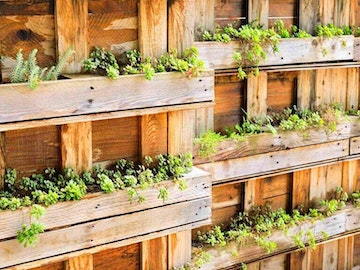
This image is property of staging-pebblemagazine.imgix.net.
Controlling Pests and Diseases
Identifying Common Urban Garden Pests
Pests can pose a significant threat to the health and productivity of your urban garden. Identifying common pests in your area is essential for effective pest control. Some common urban garden pests include aphids, slugs, snails, whiteflies, and caterpillars. Regularly inspect your plants for signs of pest infestation, such as chewed leaves, discolored foliage, or signs of insects. By identifying pests early on, you can take appropriate measures to control their populations and minimize damage to your plants.
Implementing Organic Pest Control Methods
In urban gardening, it’s important to consider the use of organic and environmentally friendly pest control methods. Chemical pesticides can have detrimental effects on beneficial insects and the overall health of your garden ecosystem. Instead, opt for organic pest control methods, such as using insecticidal soaps, neem oil, or organic repellents. You can also encourage natural pest predators, such as ladybugs or praying mantises, to help control pest populations. Another effective method is companion planting, where certain plants are grown together to repel pests or attract beneficial insects. By implementing organic pest control methods, you can strike a balance between pest management and maintaining a healthy urban garden.
Preventing Disease Outbreaks
Disease outbreaks can quickly spread and harm your plants in an urban garden. Taking preventive measures is key to maintaining plant health and preventing disease. Start by practicing good hygiene, such as cleaning your tools, containers, and gardening equipment to prevent the spread of pathogens. Proper plant spacing can help improve air circulation and reduce the likelihood of disease development. Watering at the base of the plants instead of overhead can also minimize the risk of fungal diseases. Additionally, choosing disease-resistant plant varieties and implementing crop rotation techniques can help prevent disease outbreaks. By being vigilant and proactive in preventing disease, you can ensure the long-term health and productivity of your urban garden.
Implementing Effective Weed Control
Identifying Common Weeds
Weeds can quickly invade your urban garden and compete with your plants for essential resources. Identifying common weeds in your area is the first step in effective weed control. Weeds such as dandelion, bindweed, crabgrass, and chickweed are commonly found in urban environments. Regularly survey your garden for the presence of weeds, especially around the base of your plants. By promptly identifying and removing weeds, you can prevent them from spreading and establish a healthier growing environment for your plants.
Using Mulch to Suppress Weeds
Mulching is a highly effective method for suppressing and preventing weed growth in your urban garden. By applying a layer of organic mulch, such as wood chips, straw, or compost, you can create a physical barrier that inhibits weed germination and growth. Mulch also helps retain soil moisture, regulate soil temperature, and improve overall soil health. Apply a thick layer of mulch around the base of your plants, taking care not to let it touch the stems directly. By using mulch to suppress weeds, you can significantly reduce the need for manual weeding and enhance the appearance and productivity of your urban garden.
Regular Weeding Practices
Regular weeding is essential in maintaining a weed-free urban garden. Make it a habit to inspect your garden regularly and remove any emerging weeds promptly. Using a hand trowel or garden fork, carefully dig out the weeds, making sure to remove the entire root system. Be cautious when weeding around the base of your plants to avoid damaging their roots. Regular weeding practices not only prevent weeds from taking over your garden but also minimize competition for nutrients, water, and sunlight. By dedicating time to regular weeding, you can keep your urban garden healthy, tidy, and thriving.
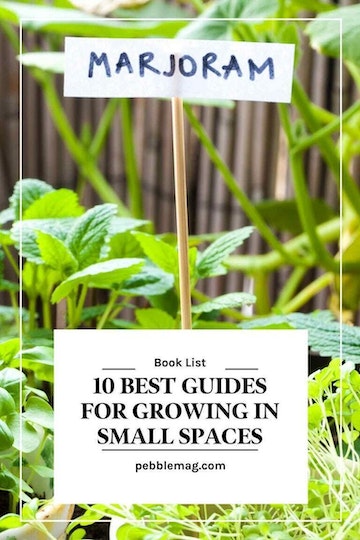
This image is property of staging-pebblemagazine.imgix.net.
Maximizing Space with Vertical Gardening
Choosing Suitable Vertical Structures
Vertical gardening is an excellent space-saving technique that allows you to grow plants vertically, saving valuable ground space in your urban garden. When implementing vertical gardening, it’s essential to choose suitable structures that can support the weight and growth of your plants. Options include trellises, arbors, fences, or even repurposed materials such as pallets or ladders. Consider the size and weight of your chosen plants when selecting vertical structures. Ensure that the structures are securely anchored and properly positioned to optimize sunlight exposure and allow easy access for maintenance.
Selecting Vining Plants
Vining plants are ideal for vertical gardening, as they naturally grow upwards and can be trained to climb on structures. Examples of vining plants suitable for vertical gardening include peas, cucumbers, beans, and certain varieties of tomatoes. When selecting vining plants, consider their growth habit and the space they require. Some vining plants may need extra support, such as tying them to the vertical structure with garden twine or using plant ties. By selecting the right vining plants for vertical gardening, you can create a beautiful and productive urban garden.
Proper Care and Maintenance
Proper care and maintenance are crucial for the success of your vertical garden. Regularly inspect your vertical structures for signs of damage or instability and make any necessary repairs or adjustments. Monitor the growth of your vining plants and provide them with adequate support as needed. Prune and train the plants to ensure they grow in the desired direction and to prevent overcrowding. Regularly water, fertilize, and monitor the soil moisture levels to provide optimal growing conditions. By giving your vertical garden the care and attention it needs, you can create a stunning focal point in your urban garden while maximizing your available space.
Utilizing Container Gardening
Selecting Appropriate Containers
Container gardening is a versatile option for urban gardening, allowing you to grow plants even with limited space. When utilizing container gardening, it’s important to select appropriate containers for your plants. Consider the size, depth, and material of the containers. Larger containers generally provide more root space and better moisture retention, while deeper containers are suitable for plants with longer roots. Choose containers made from materials such as terracotta, plastic, or fabric, taking into account their durability and drainage capabilities. By selecting suitable containers, you can provide your plants with a conducive growing environment and ensure their optimal growth.
Using the Right Potting Mix
Choosing the right potting mix is essential for the success of your container garden. Regular garden soil is not suitable for containers, as it tends to become compacted and poorly drained. Instead, opt for a high-quality potting mix that is well-draining and lightweight. Look for potting mixes that contain a balanced blend of organic matter, such as peat moss or coconut coir, and perlite or vermiculite for added aeration. The right potting mix should retain moisture while allowing excess water to drain freely. By using the right potting mix, you can provide your container plants with the necessary nutrients, water, and aeration they need for healthy growth.
Providing Proper Drainage
Proper drainage is crucial in container gardening to prevent waterlogging and root rot. Ensure that your containers have adequate drainage holes at the bottom to allow excess water to escape. If necessary, you can add a layer of rocks or broken pottery shards at the bottom of the container before adding the potting mix. This helps create a reservoir for drainage while preventing the drainage holes from becoming clogged. Additionally, avoid placing containers directly on surfaces that don’t allow water to drain, such as concrete. By providing proper drainage, you can prevent water-related issues and promote the overall health and vigor of your container plants.
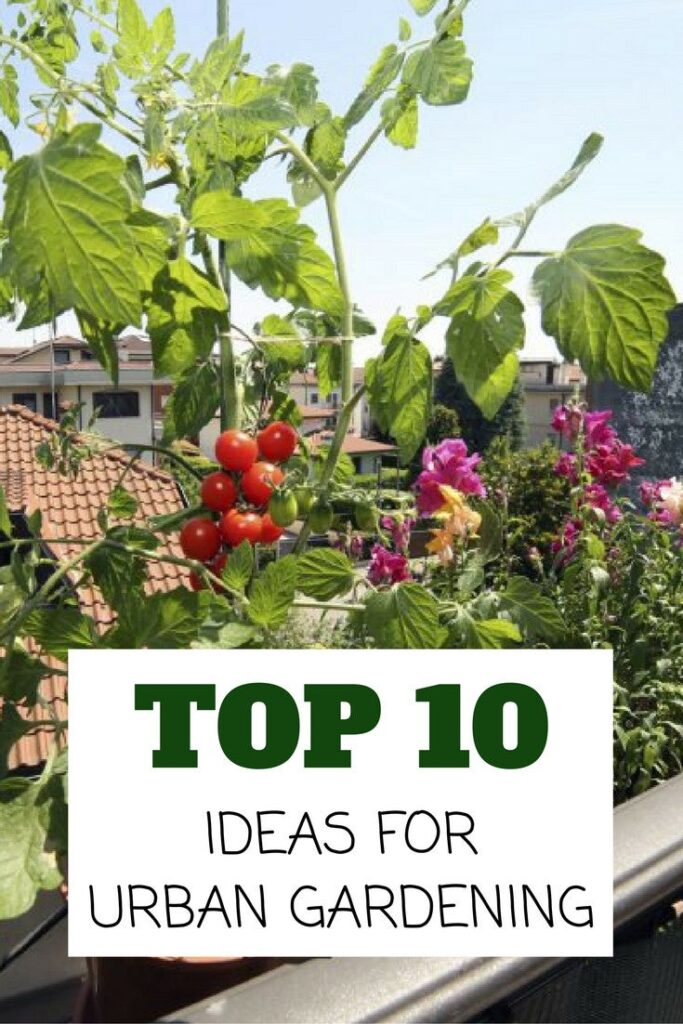
This image is property of blog.gardeningknowhow.com.
Implementing Companion Planting
Choosing Compatible Plant Combinations
Companion planting is a beneficial technique in urban gardening, as it involves growing different plants together to enhance growth and deter pests. When implementing companion planting, it’s important to choose compatible plant combinations. Some plants naturally complement each other by repelling pests, attracting beneficial insects, or improving soil fertility. For example, marigolds are often planted alongside vegetables to repel aphids, while basil can enhance the flavor and growth of tomatoes. Research and plan your companion plant combinations to maximize their cooperative benefits and avoid any negative interactions.
Utilizing Companion Plants for Pest Control
Companion plants can play a crucial role in pest control in your urban garden. Some plants have natural pest-repelling properties that can help deter common garden pests. For example, planting aromatic herbs such as mint, rosemary, or lavender can repel pests like aphids or mosquitoes. Marigolds are also known to repel numerous pests with their strong scent. Additionally, incorporating plants with vibrant flowers can attract beneficial insects, such as ladybugs or lacewings, which prey on garden pests. By utilizing companion plants for pest control, you can create a balanced ecosystem in your urban garden and minimize the need for chemical pesticides.
Enhancing Soil Fertility with Companion Plants
Certain plants have the ability to enhance soil fertility by fixing nitrogen or accumulating nutrients. When implementing companion planting, consider including plants that provide these soil-enhancing benefits. Legumes, such as peas or beans, have nitrogen-fixing nodules on their roots that convert atmospheric nitrogen into a usable form for plants. These nitrogen-fixing plants can improve the nitrogen content of the soil and benefit neighboring plants. Additionally, plants like comfrey or nettle accumulate nutrients and make them available to other plants when used as a mulch or incorporated into compost. By incorporating companion plants that enhance soil fertility, you can create a healthier and more productive urban garden.
Harvesting and Storing Produce
Determining the Right Harvest Time
Harvesting your crops at the right time is crucial to ensure optimal flavor, texture, and nutrient content. Each plant has its own specific cues to indicate when it is ready for harvest. For example, tomatoes are typically harvested when they are firm, fully colored, and have a slight give when gently squeezed. Leafy greens like lettuce or spinach should be harvested when the leaves are young and tender. Take the time to research and understand the specific harvesting requirements for each plant in your urban garden. By harvesting at the right time, you can enjoy the full flavor and nutritional benefits of your homegrown produce.
Properly Handling Harvested Crops
How you handle and care for your harvested crops can greatly impact their quality and shelf life. After harvesting, handle the produce gently to prevent bruising or damage. Remove any excess soil or debris and wash the produce to remove dirt or pests. However, keep in mind that some vegetables, such as root crops, should be stored unwashed to maintain their freshness. Consider the appropriate storage requirements for each crop, as some may need to be stored in cool, dark places, while others require refrigeration. By properly handling your harvested crops, you can ensure their quality and extend their shelf life.
Implementing Effective Storage Methods
Implementing effective storage methods is crucial to prolong the freshness and usability of your harvested crops. Some crops, like root vegetables or winter squash, can be stored for longer periods if kept in cool, dark, and well-ventilated spaces. Consider using storage containers or bins that allow for airflow while protecting the produce from sunlight. For crops that require refrigeration, such as leafy greens or herbs, store them in sealed containers or plastic bags to maintain moisture and prevent wilting. Regularly check your stored crops for any signs of decay or spoilage, and promptly remove any affected produce to prevent the spread of rot. By implementing effective storage methods, you can enjoy your homegrown produce for an extended period.
In conclusion, urban gardening is a rewarding and fulfilling endeavor that allows you to enjoy the beauty and benefits of a garden in a limited space. By carefully choosing the right location, selecting suitable plants, managing soil quality, providing adequate watering and pest control, and utilizing space-saving techniques, you can create a thriving and productive urban garden. Harvesting and storing your produce properly will ensure you enjoy the fruits of your labor for an extended period. With these tips and techniques, you can transform your urban environment into a green oasis and experience the joy of gardening no matter the size of your space.

